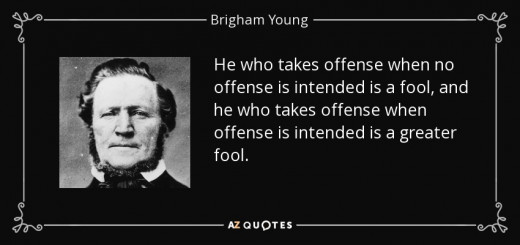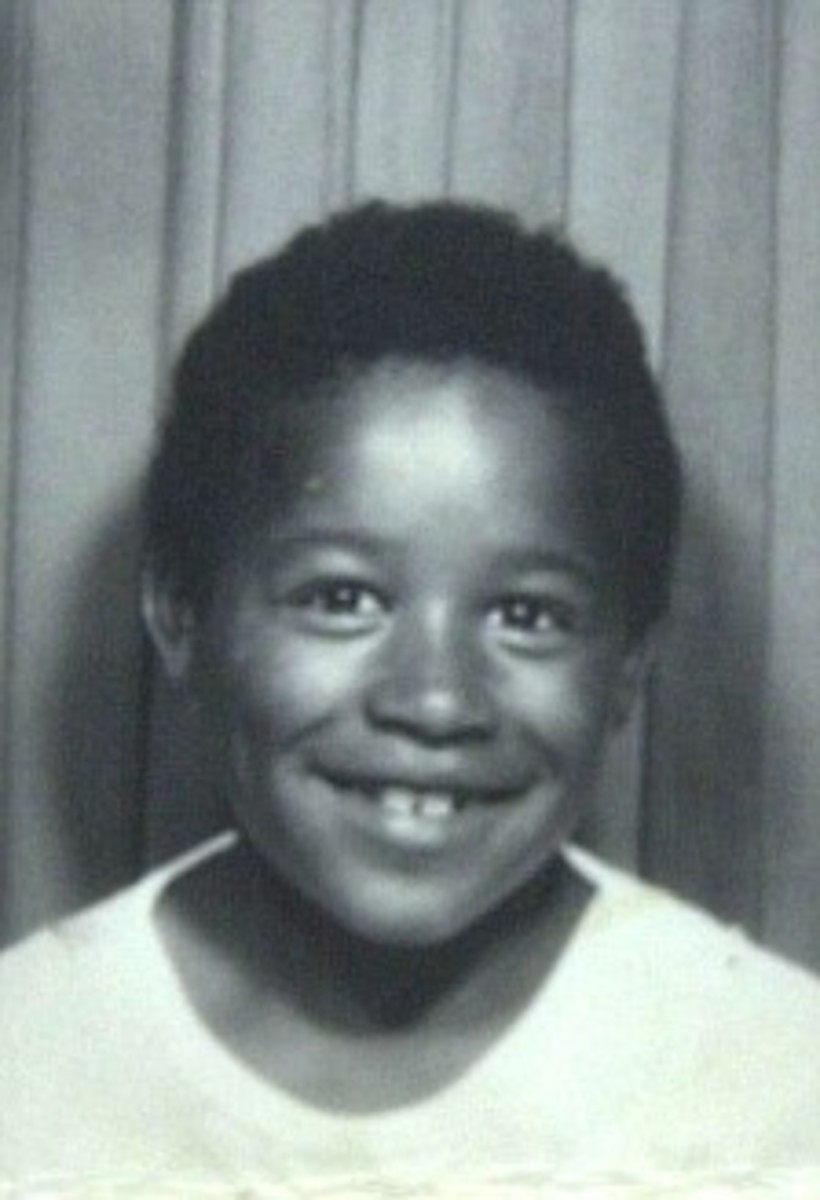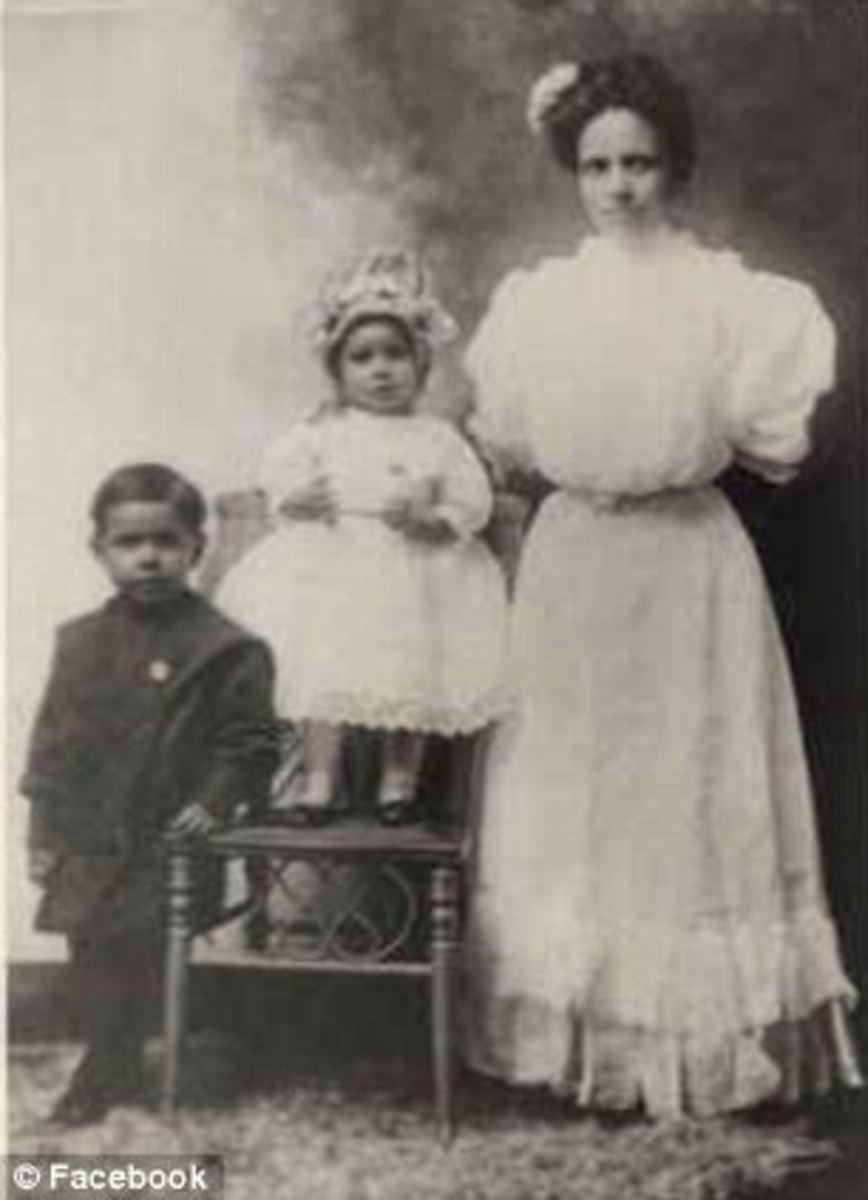Show me a man who is offended and he will prove his foolishness
Perception is deceiving
Dan Brown's landmark book The Di Vinci Code became the foundation for the same movie. In the opening scene of this Hollywood blockbuster, Professor Robert Langford (Played by Tom Hanks) shares some images of symbols and discusses symbols and the language these symbols portray. In sharing a small part of the whole image, those present remark on what they perceive the symbols represent. How they interpreted those symbols. In reality, the professor provides the full context of the symbol and what the original meaning behind those symbols actually represent.
The falsity of the student's responses were based upon perception that they have come to know and adopt as a means of understanding reality. This means that what we perceive to be true may not very well represent reality. Reason for this is because of the following two stipulations:
- Information about the real world (Reality) is processed through our sensory filters: What we see, hear, smell, taste and feel (eyes, ears, nose, mouth and skin).
- Information is passed onto our knowledge filter (What we have and are experiencing and what we understand through acquired knowledge).
Once information passes to our knowledge filter, one of three objectives occur:
We decide that the information has no meaning and purpose for us and therefore our perception stops.
- We may not recognize (or acknowledge) the significance, or meaning, however we believe there is meaning and purpose and therefore gain incentive to obtain more information.
- There is meaning and significance in the information that is being processed and it is passed along to the value filter.
The value filter processes and places a value on the information:
- It is something we have learned and is needs-satisfying, there is a positive value placed
- It is something that hinders our ability to satisfy our needs, a negative value is placed
- There is neither hindrance or satisfactions to our needs and therefore remains neutral
These concepts are part of Dr. William Glasser's choice theory concept. In this context, our perceptions are based upon the following areas:
- Cultural and ethnic identity
- Education and experience throughout life
- Beliefs and values based on social construct and family of origin
Because of this, our lives are lived out in our perceived worlds. The deception lies within our own perceptions for these main reasons:
- Highly subjective: based on one's culture, education, experience, gender, age, etc.
- Unique
- Subject to constant change (new information, new experiences = new perceptions)
- Frequently inaccurate
What basis is our perceptions drawn from?
- People: Those whom we surround ourselves with (sphere of influence), people within our own culture and ethnic group, members within our given community, and society at large.
- Places: our environments (past and present).
- Events: what we experienced in the past, currently experiencing and see unfolding. Events in history and present day events being experienced.
- Things: Beliefs we have adopted, knowledge, information and ideologies. Materials and resources fit within this category as well.
All of this shapes how we understand and interpret the reality of the world. More importantly, how we decide to interact within the context of our own defined reality. We choose to interact in certain situations, while in others, we refrain from taking specific action. Perception is motivation behind how we choose to behave and interact with the real world. In most cases, much of our behavior stems from emotionally charged responses to specific people, particular places, significant events, and specific things (like symbols). In other words, we react emotionally to something that we perceive to be insulting - something that we have chosen to take offense too. This is how perception becomes deceptive.
Opening scene to The Di Vinci Code
Being offended and finding offense
Two significant quotes provide some insight in understanding the nature of being offended, and even going about finding an offense. A third quote provides a more balanced way of protecting ourselves from being offended, regardless, and how not to act out in foolish behaviors.
First, Proverbs (See Proverbs 12:16, KJV) shares this insight: A fool's wrath is presently known: but a prudent man covereth shame.
According to Matthew Henry's Commentary, we understand this passage as follows:
Note, 1. Passion is folly: A fool is known by his anger (so some read it); not but that a wise man may be angry when there is just cause for it, but then he has his anger under check and direction, is lord of his anger, whereas a fool’s anger lords it over him. He that, when he is provoked, breaks out into indecent expressions, in words or behaviour, whose passion alters his countenance, makes him outrageous, and leads him to forget himself, Nabal certainly is his name and folly is with him. A fool’s indignation is known in the day; he proclaims it openly, whatever company he is in. Or it is known in the day he is provoked; he cannot defer showing his resentments. Those that are soon angry, that are quickly put into a flame by the least spark, have not that rule which they ought to have over their own spirits. 2. Meekness is wisdom: A prudent man covers shame. (1.) He covers the passion that is in his own breast; when his spirit is stirred, and his heart hot within him, he keeps his mouth as with a bridle, and suppresses his resentments, by smothering and stifling them. Anger is shame, and, though a wise man be not perfectly free from it, yet he is ashamed of it, rebukes it, and suffers not the evil spirit to speak. (2.) He covers the provocation that is given him, the indignity that is done him, winks at it, covers it as much as may be from himself, that he may not carry his resentments of it too far. It is a kindness to ourselves, and contributes to the repose of our own minds, to extenuate and excuse the injuries and affronts that we receive, instead of aggravating them and making the worst of them, as we are apt to do.
Here, there are two types of characteristics that mark a person. A foolish man is one who is easily provoked to anger. How is he provoked to anger? Through his own resentments and perceived injustice. A foolish man becomes enraged and acts out his anger without regard to his own safety or the safety and well being of other individuals. He is consumed by his belief. A belief that stems from his own perception of the real world. Unlike the foolish man, a wise man finds wisdom in meekness. He is not reactive to insult or injury. He may find offense, however, chooses not to engage in an emotional response. And, if he does react emotionally to being offended and displays a moment of foolishness, he is quick to recognize the behavior for what it truly is - an act of foolishness.
This brings us to the second quote. Brigham Young led the Mormon Pioneers into what is now Salt Lake City. One of his quotes is as follows:
He who takes offense when no offense is intended is a fool, and he who takes offense when an offense is intended is a greater fool.
Whether or not someone goes out of their way to offend us, or we merely take offense to something, a person, or a particular ideology, we become foolish in our own behavior. We react out of our deep rooted emotions and belief systems. Our emotions become the motivation behind our hatred, vitriolic responses, and despondence over in relation to the real world. Meaning, as we experience the real world and define our reality through how our own perceptions work, we develop resentments and engage in behavior that is emotionally charged.
Brigham Young - A Fool takes offense

The promulgation of racism and hatred
American history is not innocent when it comes to racism and the promulgation of hatred. However, racism is not a single experience within the American experience. Racism has long established itself within the human culture and social construct of civilization. George M. Fredrickson has an article at PBS. org titled: RACE - The Power of an Illusion. In this article, he reflects on how racism developed within the 13th and 14th centuries with the Jews being viewed as inferior (this is later known as Antisemitism today).
Integral to racism - as being defined by Fredrickson in which "..one ethnic group or historical collectivity dominates, excludes, or seeks to eliminate another on the basis of differences that it believes are hereditary and unalterable." - is how one social group of individuals view another social group of individuals. This is based on current social beliefs, experiences, and knowledge. Racism became definitive in the rise of slave trade, and part of the movement to maintain slaves in the modern era. Yet, as society began to come to terms with the reality of slavery, abolitionists rose up to promote freedom of slaves. This culminated into the American Civil war.
It is during this civil war, a particular flag was developed and utilized. Today, this flag has become the obsessive object of hatred and belief that it represents evil and racism. A mere symbol of America's heritage and past, now is interpreted to be racist. All of which are based on present day perceptions and the promulgation of racism in our society today.
The Battle Flag of the Army of Northern Virginia

What do you think?
Does the Battle Flag of Northern Virginia represent hate and racism or American Heritage?
Rational and irrational thinking
As we have defined, perception is based on our own experience, cultural influence, ideologies we have adopted over the year, our own environment, and entrenched belief systems that are culturally based. In addition, our perception is a motivation to how we react to individuals, places, events and things. All of which is based on the way we interpret the real world in order for it to conform to our perceived worldview.
In the next article, the focus will be more on how we engage in irrational thought processes and how our behavior is indicative of that thought process. Suffice it to say, what we think produces particular feelings. These feelings produce action/behavior as a response to how we feel, and the culmination of the consequences of our behavior. A foolish man reacts to specific triggers because of his emotionally charged perception. These emotional responses are due to irrational thinking and belief systems. In other words, a foolish person becomes offended and reacts because of that offense due to a lack of emotional regulation (or, in more technical terms, lacks emotional intelligence).
This emotionally charged thought process is based on perceived threat. Human beings are naturally programmed with a survival instinct of either fight or flight. This survival instinct is triggered when we interpret something as a potential threat upon ourselves, our family or on other individuals. In most cases, how we interpret specific threats are based on reality and we are either being prepared to flee the danger to come, or to face off and engage the threat.
However, when we are speaking of a foolish person reacting out of their own anger and irrational thought process, we are speaking of an individual who perceives a threat when there is no real threat present. Again, it is emotionally charged and motivated to engage as a reactionary. These irrational thoughts are based on irrational beliefs that are inflexible. These beliefs define the perception of a fool.
Engage in the discussion
There is much to write about this topic. This article is meant for introductory to challenge particular beliefs in order to engage in shifting how we understand what is happening in our society today. Racism is a huge social issue. With it, we all have our specific thoughts.
Therefore, consider the following points before commenting on this article:
Am I responding out of my own emotionally charge thoughts and beliefs? If so, take some time to examine those thoughts and beliefs, what is motivating them and present a comment that encourages mutual discussion.
Am I unwilling to comment to further mutually satisfying discussions where there is a modicum to agree to disagree? If yes, then it is best that such comments do not belong here.
Also, consider that name calling is not appropriate and proves the point of this article - only a fool engages in name calling.





